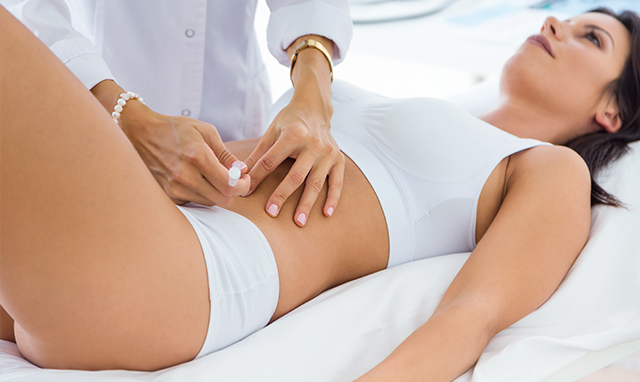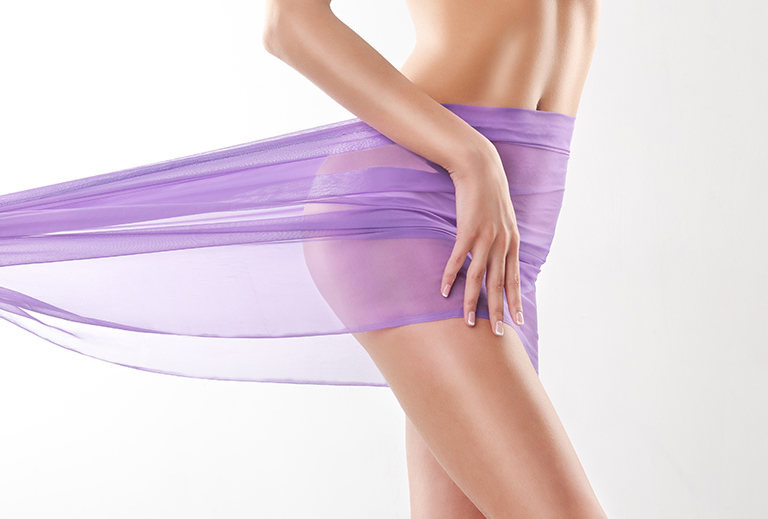
Having the body we desire isn’t always as easy as exercising regularly and eating well. Often, stubborn fat stands in the way of you feeling great about your appearance. With Liposuction, there is a way to get rid of this stubborn fat and help you feel confident with your body

Liposuction, also known as lipo, is a minimally invasive cosmetic procedure that removes areas of fat from the body through a small thin tube called a cannula. The fat from the targeted area is suctioned from the body through this tube to help a patient achieve a slim and balanced appearance.
Although the conventional procedure was effective in removing excessive fat deposits, it was a painful procedure that involved suctioning out large areas of solid fat. New technology has allowed for different techniques that have improved the accuracy and reduced the pain associated with this procedure. Today, liposuction is usually performed via the tumescent technique or with the help of ultrasound or a laser. These new technologies have transformed liposuction into a much safer and less invasive procedure.
The ideal candidate for liposuction is someone who is in good overall health and maintains a healthy lifestyle, but has one or more problem areas of stubborn fat deposits. It is also important for patients to have realistic expectations, and remember that the procedure cannot be used as a means for major weight loss. It is instead used to remove localized areas of stubborn fat after the patient has attempted other natural weight-loss methods.

Liposuction can be used to treat localized fat deposits within the:
This procedure may be performed alone, or can be combined with other cosmetic procedures, such as breast reduction or tummy tuck, to achieve maximum results.
There are several different techniques currently available for patients seeking liposuction treatment.. Liposuction is performed through a tumescent technique, and may also include the assistance of ultrasound/ laser or vibratory energy.
The procedure is performed on an outpatient basis under local or general anesthesia. Surgeon will make several tiny incisions and inject a local anesthetic into the area to help expand and firm the fat, making it easier to remove. The cannula is then inserted through the incisions to suction out the fat. Usually,no stitches are needed after the procedure because the incisions are small enough to heal on their own.

An abdominoplasty, often called a “tummy tuck,” is a popular procedure used to flatten and shape the abdomen by removing excess fat and skin, and tightening muscles.
Tummy tucks take approximately two to five hours and are performed under general anesthesia. This procedure is performed on an inpatient basis.
Surgery involves two incisions: one from hipbone to hipbone close to the pubic area, and another around the navel. They will separate the skin from the abdominal muscles, which are then pulled together and stitched into place for a firmer abdomen and narrower waist. The skin flap is then stretched down and over the newly tightened muscles, excess skin is removed, and the navel is reattached in a natural position. Lastly, surgeon will close the incisions and apply sterile surgical dressings over the sutured areas.
After surgery, compression garments are worn and a temporary tube may be inserted under the skin to drain excess fluid from the surgical site. Recovery time ranges from two weeks to a few months. You should limit strenuous activity for at least six weeks, and may need to take off from work for up to a month. Dr. Garg will give you specific instructions for your individual recovery. Following these instructions can help speed up your recovery, and reduce the risk of any post-surgery complications.
A tummy tuck leaves you with a flatter, more-toned abdominal area that fits the natural contours of your body. It can improve your appearance and confidence by helping you look and feel younger and slimmer. The results of this procedure are visible right away, and continue to improve. With a balanced diet and regular exercise, results are long-lasting. Scars will fade with time, leaving your stomach sleeker and more defined than ever before.
Though rare, post-operative complications from any surgical procedure are possible. They may include infection, blood clots and poor healing, which may require further surgery.
Patients who have had previous abdominal surgery should know that their old scars might be raised, stretched or generally more noticeable after the tummy tuck procedure. A scar revision procedure after a tummy tuck can help minimize the appearance of any scars.
Partial abdominoplasty, or “mini tummy tuck,” is similar to the regular tummy tuck procedure, except it involves a shorter incision and the skin is lifted only to the navel, which does not have to be moved. This procedure is ideal for patients who need just a little improvement in order to reach their desired results. You can discuss the differences between these procedures, as well as weigh their benefits and risks with Dr.B K Garg, in order to decide which procedure is best for you.

Buttock augmentation with fat transfer, also known as the “Brazilian butt lift”, is performed with the patient under general anesthesia. The surgery involves two steps. First, surgeon collects the patient’s own fat through a process via to liposuction within a sterile, closed system to prepare the fat for later placement into the gluteal region. The most popular areas for harvesting fat before buttock augmentation are the lower back, waist, flanks (love handles), thighs and stomach. This not only provides the raw material for buttock enhancement, it also contours the areas around the butt for a more dramatic result. The fat that has been removed is then purified using a special device so that the fat cells are ready to be reintroduced to the body with minimal reabsorption.In the second step, the harvested fat is added to the buttocks with hundreds of tiny injections at a variety of depths to ensure an even, attractive augmentation. This method of fat injection lends a shapely contour to the buttocks that lasts a long time. The entire procedure will typically take between two and four hours.
A Brazilian butt lift can enhance the natural curves for patients who are unhappy with the shape of their rear ends. It can also add volume and roundness to a flat or small butt for patients seeking a more balanced body profile. Generally, if you are at least 18 years old and you are looking for a fuller, curvier butt, a Brazilian butt lift may be for you.
After a Brazilian butt lift, patients should avoid sitting directly on the buttocks or lying on their backs for two to three weeks to maximize results. During this time, compression garments may be worn to reduce swelling. Patients may experience some pain or discomfort, bruising and swelling after the procedure. Most patients return to work within two weeks after their buttock augmentation and are able to resume all normal activities within four weeks. Swelling typically dissipates by the sixth week and the final outcome is visible.
When performed by an experienced surgeon using the proper techniques, buttock augmentation is a highly satisfying and permanent procedure that enhances the profile of the buttocks and surrounding areas for a younger, firmer, curvier look a la Kim Kardashian or Jennifer Lopez (J. Lo)!
Labiaplasty is a popular procedure because it facilitates a woman’s self-confidence, and because smaller, more proportionate external genitalia are less noticeable and more physically comfortable.
The labia majora are the outer lips located at the vaginal opening. This tissue may grow larger or longer than is comfortable, leading to self-consciousness in certain types of clothing or during times of intimacy. When excess tissue is creating physical or emotional discomfort, labia majora reduction may be an ideal solution. This procedure involves removal of an elliptical-pattern piece of tissue through a small, hidden incision.
In some instances, the outer lips are not elongated, but deflated. One option for adding volume to deflated labia majora is fat grafting. Fat grafting or fat transfer is done by injection with a small, blunt cannula. Fat is taken by a small amount of liposuction of another body area (often the pubis or pubic area or inner thigh).
Most women are aware that fatty tissue is lost from the face and the breasts as age progresses. The same may occur in the pubic area, as well. Because it is common to groom pubic hair by waxing or shaving this area, volume loss, and the subsequent sagging of tissue, can create frustration and discomfort. Some women also cite sagging of the outer lips as a cause of uncomfortable sex. For more permanent results,you may want to consider micro fat grafting. To restore fullness to the labia majora,surgeon extracts a small amount of fat from an area such as the inner thigh using a liposuction technique. The harvested cells are then introduced into the outer lips.
After surgery, patients will experience swelling and mild-to-moderate pain. Painkillers may be prescribed to help with any pain.
Post-operatively, patients will want to engage in only low-level activity for about five days. Exercise may be gradually resumed after two to three weeks.
Sexual intercourse should be avoided until at least 4 to 6 weeks after labiaplasty surgery. Engaging in sex too soon presents a risk of tearing. Tears may heal on their own, but can be frightening.
The risks of labiaplasty are very low due to the highly vascular nature of this part of the body. General surgical risks include infection and issues with wound healing.